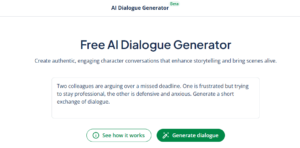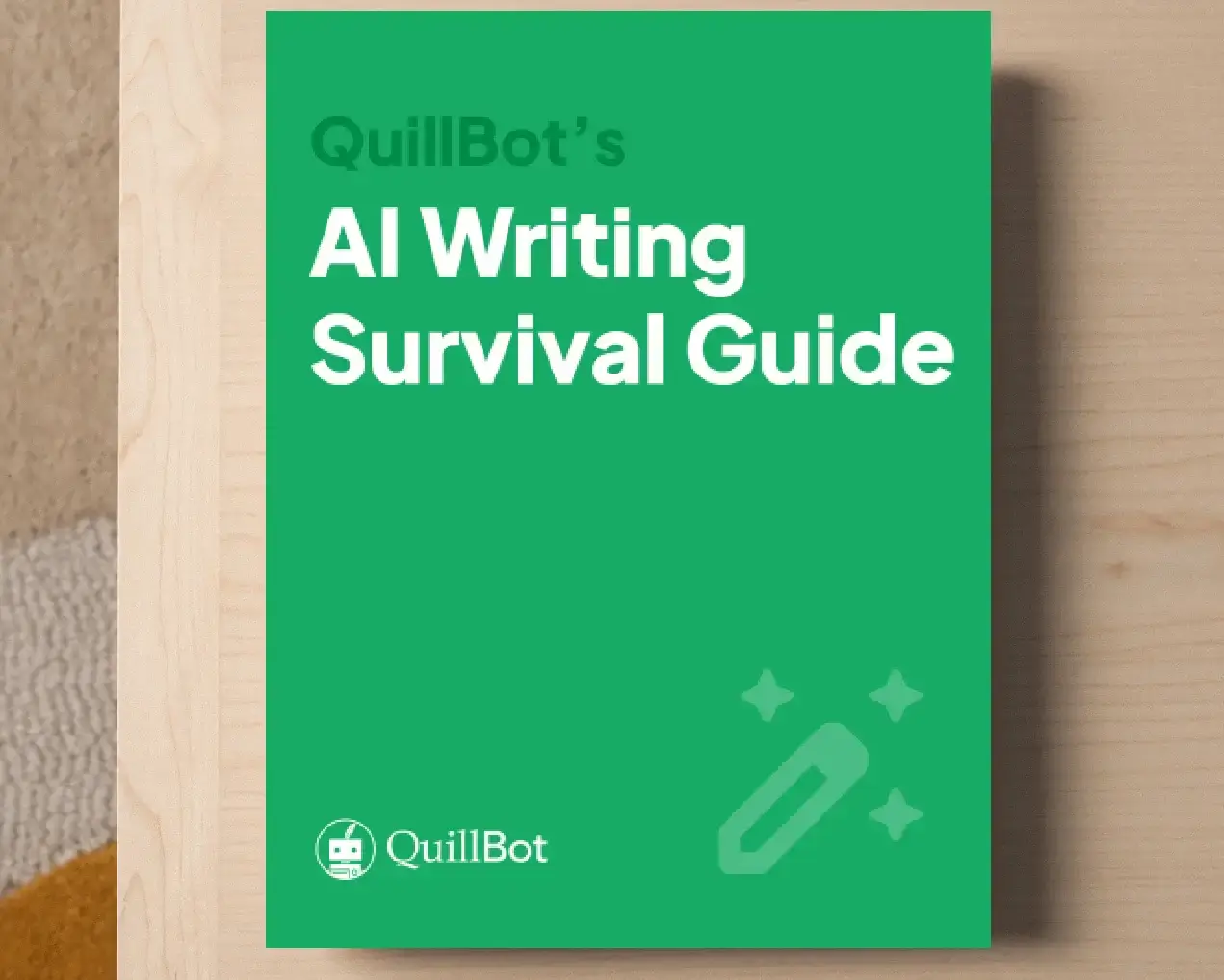How to Write Dialogue: Technical & Creative Tips
You’re deep into the first pages of a gripping novel, completely absorbed into the world the author has built. The plot races forward, the characters feel genuine—until someone opens their mouth:
“Hello, Margaret. How are you feeling today? I am concerned about your well-being because yesterday you seemed quite distressed about the situation with your employment.”
You blink. Read it again. Nobody talks like that. Real people say things like, “Hey, you okay? You seemed pretty upset about work yesterday.” The spell is broken. You’re no longer in the story—you’re painfully aware you’re reading one.
Bad dialogue is like a speed bump in your reader’s mind. It jolts them out of the fictional dream and reminds them they’re holding a book, not experiencing a world. Great dialogue, on the other hand, disappears completely. Readers don’t even notice they’re reading words on a page because the characters feel so alive and their conversations so realistic that you become an invisible observer in their world.
Whether you’re figuring out how to write dialogue in a novel or even incorporating dialogue into an essay, the challenge remains the same: writing conversations that feel authentic to your setting and characters.
This guide will walk you through everything from proper formatting and punctuation rules to the secrets of making your characters sound like real people, not like they’re reciting from a textbook.
How to format and punctuate dialogue in fiction
Before you focus on what your characters say, it’s important to get the technical side of dialogue right. Proper dialogue formatting and punctuation keep readers grounded in the story instead of wondering who’s talking or where the conversation fits.
1. Put punctuation inside the quotation marks
In American English, dialogue is enclosed in double quotation marks, and punctuation that belongs to the speech stays inside the quotes. This applies to periods, commas, question marks, and exclamation points. In British English, single quotation marks are standard for dialogue.
| American English | British English |
|---|---|
| “Did you hear that?” she whispered.“I did!” he replied. | ‘Did you hear that?’ she whispered.‘I did!’ he replied. |
This guide follows the US convention, which is most common in American fiction and most international style guides.
2. Use commas with dialogue tags
A dialogue tag tells the reader who’s speaking (e.g., “she said,” “he asked”). When a tag follows the dialogue, end the quoted speech with a comma, not a period, and don’t capitalize the tag unless it’s a proper noun.
“What are you suggesting?” Maria asked.
If there’s no dialogue tag and the sentence simply ends, use a period inside the quotation marks.
“Fine. But I’m not happy about it.”
3. Use action beats as their own sentences
An action beat shows what a character is doing before, during, or after they speak. For example, tapping a finger on the table, pacing the room, or wincing. Sometimes an action beat can replace a dialogue tag. In this case, end the spoken line with a period, then follow with the action as a separate sentence.
4. Start a new paragraph for each speaker
Every time someone new speaks, start a new paragraph. Even if the previous paragraph was just one word, give each speaker their own space:
“Almost.”
“We need to leave in five minutes.”
“I know, I know. Just give me a second.”
5. Use ellipses for trailing-off speech
When a character hesitates or trails off mid-thought, use ellipses inside the quotation marks. Use them sparingly, though; too many can make dialogue feel melodramatic.
“Well, I suppose if you really want to …”
6. Show interruptions with an em dash
When one character interrupts another, use an em dash (—) at the end of the interrupted dialogue.
“Nobody asked what you think,” Marcus snapped.
“But if you’d just listen—”
“I’m done listening.”
When a character’s own actions interrupt their speech, use commas within the dialogue and keep the action separate:
How to write dialogue in an essay (quick tip)
While essays typically rely on certain rhetorical modes like exposition and analysis, dialogue can work well in narrative-style writing or when adding color to an anecdote in a more formal essay. The same punctuation and formatting rules apply as in fiction:
- Use quotation marks for spoken words.
- Start a new line for each new speaker.
- Follow your style guide (MLA, APA, Chicago, etc.) for citations.
Keep dialogue brief and purposeful—it should illustrate a point or bring a scene to life, not overwhelm your argument or distract from your thesis. This small touch can make your essay more engaging without sacrificing clarity or professionalism.
How to write dialogue in a story
After learning the basics of dialogue format, the next step is mastering how to write good dialogue between two people that reveals character, builds tension, and advances the plot. Here are some tips for writing natural-sounding dialogue:
- Give each character a distinct voice
No two people speak exactly alike. Diction, sentence length, and even rhythm can reveal personality, background, and mood. A teenager won’t use the same phrasing as a professor, and the same character will speak differently to their mother than to their best friend. Distinct voices keep readers from needing constant dialogue tags.
- Make dialogue feel natural (but give it purpose)
While your dialogue should sound authentic, it isn’t a transcript of real speech. Real conversations are full of filler and small talk that would bore readers. Every line should either move the plot forward, reveal something about the characters, or build tension. Even casual chatter should serve a function; for instance, showing that characters are beating around the bush, avoiding a difficult topic.
- Use subtext to add depth
Characters rarely say exactly what they mean, and dialogue is more engaging when there’s something left unsaid beneath the words. Subtext lets readers infer feelings, motives, or tension without being told outright. Small pauses, hesitations, or subtle hints in tone and body language can convey far more than literal statements.
[He hears doubt and disappointment even though it isn’t stated directly]
- Think about what the dialogue achieves
Before you write a scene, ask yourself: What’s the purpose of this exchange? Does it create tension, reveal hidden motives, or deepen relationships? Dialogue can also plant subtle clues or foreshadow events. If a line doesn’t serve a purpose, it probably doesn’t belong.
- Vary pacing with breaks, interruptions, and silence
Long blocks of uninterrupted speech can drag and feel unrealistic. Break them up with action beats, interruptions, or brief responses from other characters to keep the exchange dynamic. At the same time, remember that not every moment needs words; well-placed pauses or a character choosing not to respond can speak volumes and add tension.
- Read it aloud
Dialogue that looks fine on the page can sound awkward when spoken. Reading your lines out loud—or even acting them out—can help you catch stiff phrasing or unnatural rhythms.
Things to avoid when writing dialogue
Even the best dialogue can fall flat if you slip into common pitfalls. Certain habits can pull readers out of the story and make characters feel less believable. Here’s what you should avoid:
- Info dumps
Avoid forcing characters to explain backstory or information just for the reader’s benefit. Dialogue should never feel like a lecture or a forced way to deliver facts. This is sometimes called the “as you know, Bob” trope—where one character clumsily explains something both speakers already know, just so that the audience can hear it. For example, “As you know, Bob, our parents died when we were young.”
- Unnatural phrasing or jargon
Characters should speak in ways that feel true to them, not in overly formal, technical, or “clever” language that sounds out of place. Overloading dialogue with jargon or stilted wording breaks immersion.
- Stereotypical or flat speech
Avoid clichés or one-dimensional dialogue that reduces characters to stereotypes or caricatures. Every character deserves a unique voice that reflects personality, background, and context.
“That’s just how I’ve always done things,” he muttered, refusing to listen. [flat, one-note “stubborn elder”]
- Overusing dialogue tags
Using “she said,” “he replied,” and similar tags after every line can feel monotonous and slow the pace of your story. Readers don’t need a tag every time if it’s clear who’s speaking—mix in action beats or let the dialogue flow naturally.
“I had no choice,” he replied.
“Still, it was reckless,” she argued.
- Talking heads/no dialogue
Avoid dialogue that is mere back-and-forth with no gestures, reactions, or action. Even if snappy exchanges can reflect tension or mood, too many lines like this feel monotonous. Break up the dialogue with small actions or beats to keep scenes engaging.
| Talking heads example | Improved version |
|---|---|
| “I can’t believe you did that.”
“I had no choice.” “Well, it’s still frustrating.” “You think I don’t know that?” “Maybe you don’t understand the consequences.” |
“I can’t believe you did that.” He shoved the papers aside. “Did you even think?”
“I had no choice.” She didn’t look up. “Well, it’s still frustrating.” He ran a hand through his hair, pacing a few steps. “You think I don’t know that?” She laughed bitterly, crossing her arms. “Maybe you don’t understand the consequences.” He sank into the chair, staring at the floor. |
How to use a dialogue generator
Even experienced writers sometimes struggle with creating natural, engaging dialogue in a story, novel, or essay. A dialogue generator like QuillBot’s AI dialogue generator can help you:
- Overcome writer’s block by suggesting new ways for characters to respond.
- Experiment with character voices and see how dialogue might differ between two characters.
- Test variations quickly to find what works best in your story or short scene.
Here’s how QuillBot’s AI dialogue generator works:
- Enter context or character details: Describe the scene, the characters, or the situation briefly.
- Tweak the results: Refine the dialogue by adding more detail, emotion, or subtext. For example, you may want to experiment with the tone and make it more formal, casual, tense, or full of sarcasm.
- Get your dialogue: After all the edits, you have a draft you can use for your stories, scripts, or projects.
Remember, AI-generated dialogue is a starting point, not a finished product. While it can offer ideas and alternatives, the most compelling dialogue always comes from human insight.
Frequently asked questions about how to write dialogue
- What is the ellipsis symbol?
-
The ellipsis symbol is a series of three dots (“…”). It is a special character that some word-processing apps automatically create when you type three periods in a row. An ellipsis shows that something has been omitted from quoted text, or that a speaker or writer has paused or trailed off in speech or thought. While the ellipsis is often formatted with spaces between the dots (“ . . . ”), some style guides (e.g., AP Style) prefer the three dots without spaces (“…”).
- What is a dialogue?
-
A dialogue is a conversation between two or more people in a book, play, or film. In prose, lines of dialogue are typically enclosed in quotation marks and followed by a dialogue tag (e.g., “he said”).
Writers use dialogue to create believable characters or to advance the plot by providing background information about the story.
QuillBot’s AI dialogue generator can help you experiment with character voices, making it easier to create natural-sounding conversations.
- What is direct speech?
-
Direct speech is a direct quote of another person’s exact words in the same order and in quotation marks (as opposed to indirect speech/reported speech, which is a form of paraphrasing).
The following examples illustrate the differences between direct speech and indirect speech/reported speech.
- Direct speech: The recruiter asked, “Why do you want to work here?”
- Indirect speech/reported speech: The recruiter asked me why I want to work there.
When you’re writing with direct speech, QuillBot’s free Grammar Checker can help you ensure that the quotation marks and other punctuation are in the right place.
Cite this Quillbot article
We encourage the use of reliable sources in all types of writing. You can copy and paste the citation or click the "Cite this article" button to automatically add it to our free Citation Generator.
Nikolopoulou, K. (2025, October 08). How to Write Dialogue: Technical & Creative Tips. Quillbot. Retrieved December 8, 2025, from https://quillbot.com/blog/creative-writing/how-to-write-dialogue/


